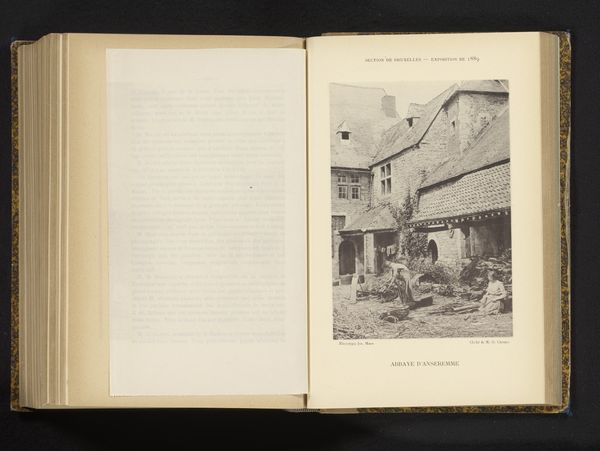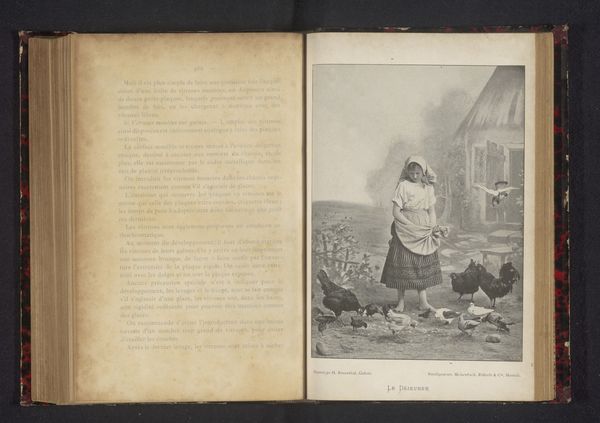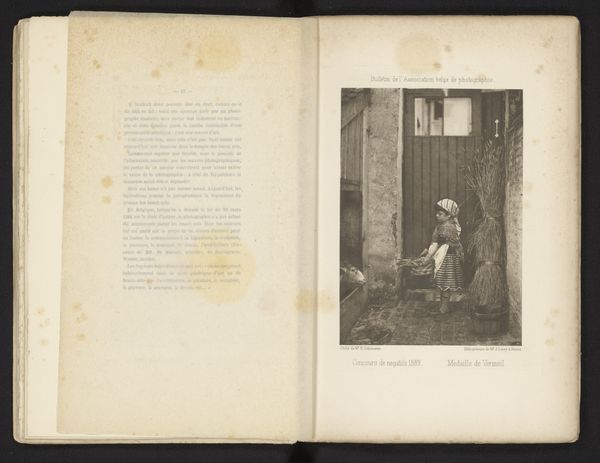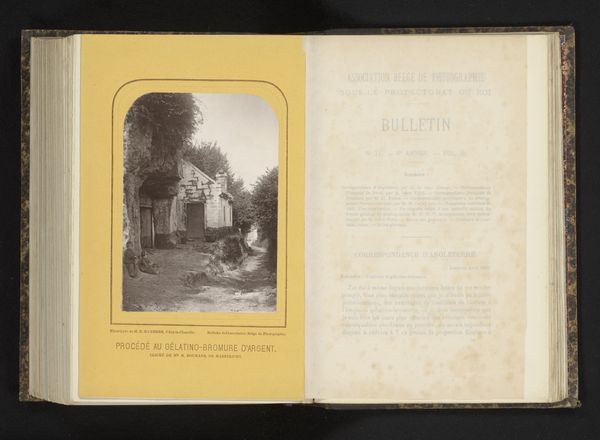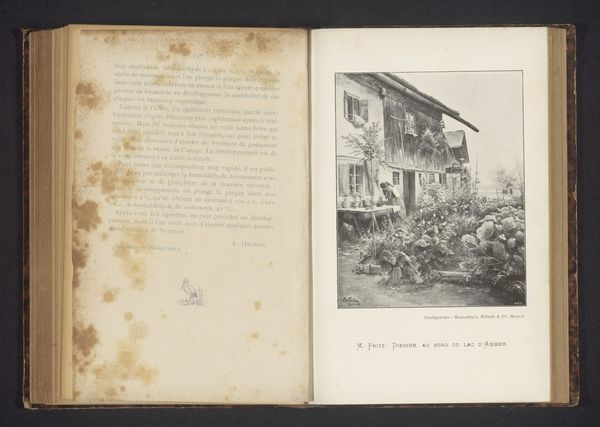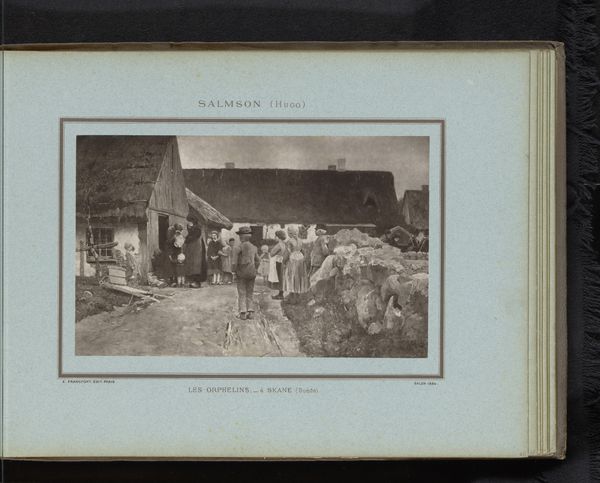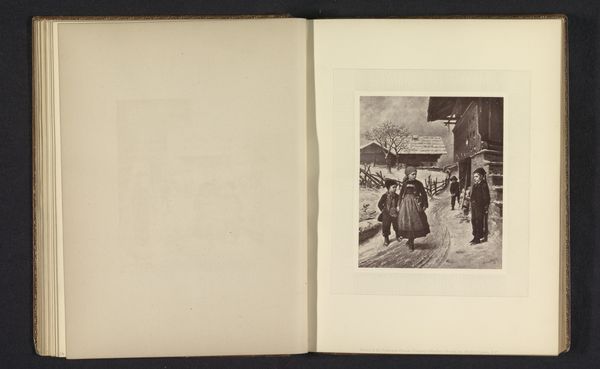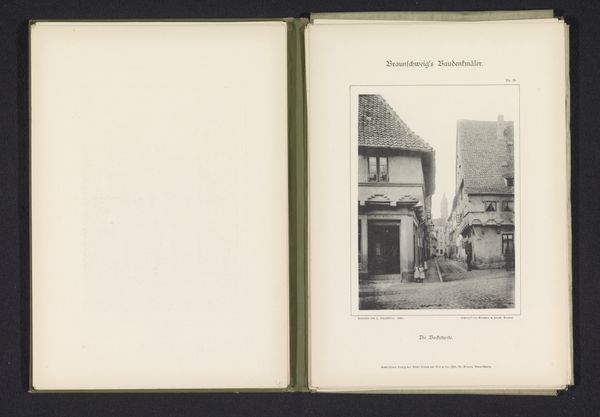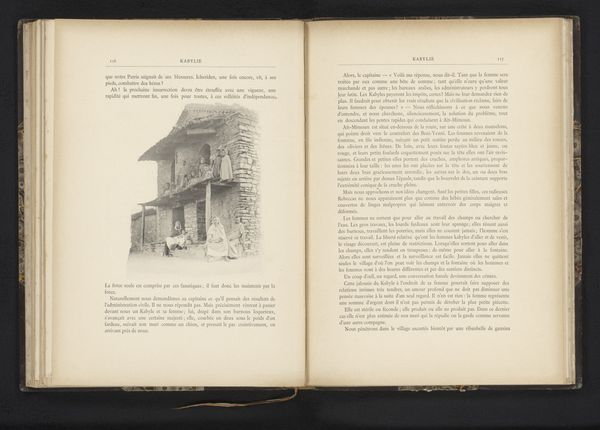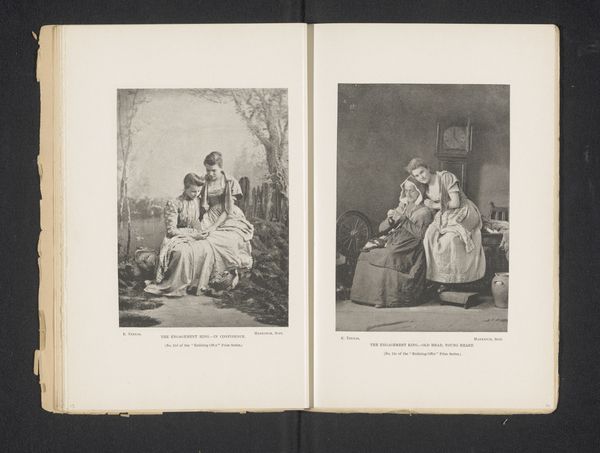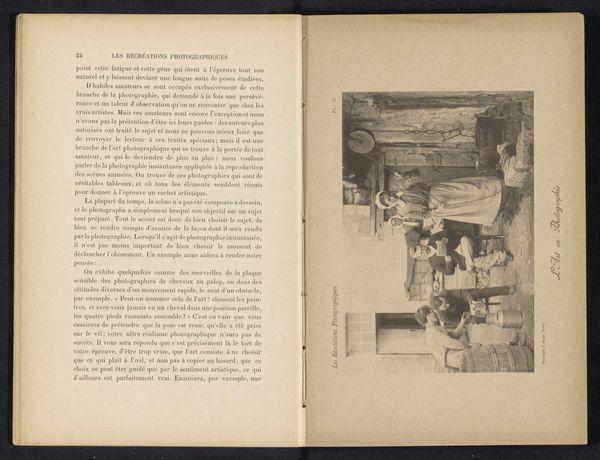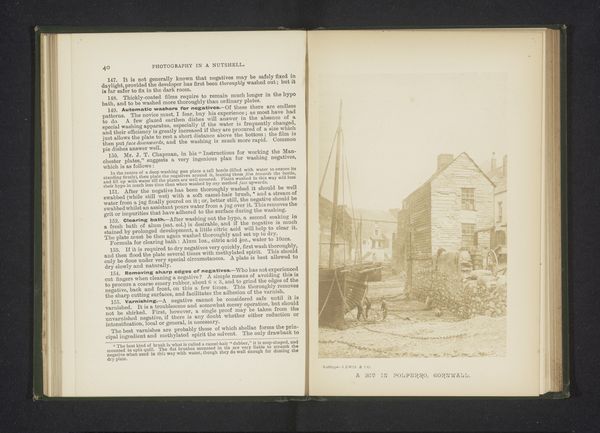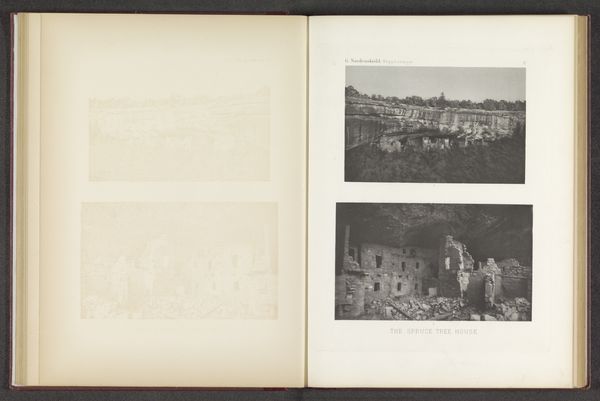
print, photography, gelatin-silver-print
#
portrait
#
pictorialism
# print
#
photography
#
gelatin-silver-print
#
genre-painting
Dimensions: height 163 mm, width 122 mm
Copyright: Rijks Museum: Open Domain
Editor: So this photograph, "Twee onbekende vrouwen en een onbekende man voor een gebouw," which translates to "Two unknown women and an unknown man in front of a building", is a gelatin silver print from before 1895, by M. Bovagne. I’m struck by the sense of quiet domesticity – the people, the simple structure... it feels timeless, almost. What do you see in this piece? Curator: That feeling of timelessness resonates with me. The individuals become symbols themselves, archetypes of a rural past. Consider how the rough texture of the building mirrors the lines etched in their faces, the worn garments reflecting a life intimately tied to the land. Do you notice the way they aren't making eye contact? Editor: Yes, the seated woman is looking at her hands, while the standing woman has a more contemplative, almost mournful gaze, turned away from the man entirely. Curator: Precisely. Their averted gazes invite us, the viewers, to project our own narratives and feelings onto them. This pictorialist approach evokes the genre paintings of the period, sentimentalizing peasant life, creating a cultural memory of an idealized past, even if divorced from its harsh realities. Consider what they may be symbolic of…the quiet resilience of women or the fading of an agricultural way of life? What do you think? Editor: I hadn’t thought of it that way. Seeing them as symbols rather than individuals helps unpack the deeper meanings within the image and its period. It makes the quiet even more loaded, almost elegiac. Curator: Indeed. By understanding the symbolic language employed, we can engage more deeply with not just this image but with a broader understanding of its era. It's more than just a photograph; it is a repository of collective memory.
Comments
No comments
Be the first to comment and join the conversation on the ultimate creative platform.
